Sentosa unveils plan to cool key visitor areas by 4°C without air-conditioning
Sentosa will introduce 10 "cool nodes and zones" by 2030 to help visitors beat the heat.
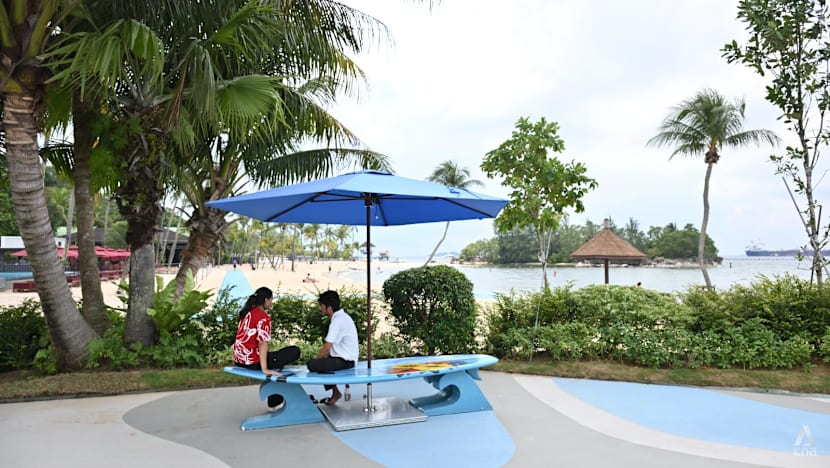
The public at a cool node near Siloso Beach in Sentosa on Sep 24, 2025. (Photo: CNA/Raydza Rahman)

This audio is generated by an AI tool.
SINGAPORE: As part of a plan to lower temperatures in parts of Sentosa by at least 4 degrees Celsius without the use of air-conditioning, Sentosa Development Corporation (SDC) will be implementing a network of 10 cool zones and nodes across the island resort.
On Tuesday (Oct 7), the statutory board unveiled an islandwide initiative targeted at enhancing thermal comfort amid rising temperatures.
By 2100, Singapore could see daily maximum temperatures exceed 35 degrees Celsius for up to 351 days per year. Presently, such peak temperatures are recorded occasionally in the hotter months of May to July.
The heat could mean those engaged in outdoor activities will be at increased risk of heat stress, and Singapore is currently looking at a heat resilience strategy that cuts across urban planning, building design, public health and community awareness.
As part of its Cooling Sentosa Roadmap, SDC will lay out a cooling network comprising 10 cool nodes and zones that will have a range of measures to cool guests, such as shades, fans and hydration points.
Apart from the network, SDC is also implementing immediate and practical measures to improve the guest experience, including replacing fans, installing new ones and adding water coolers.
It will also introduce soil-less green roofs over covered walkways to lower surface temperatures by the first quarter of next year.
Mr Michael Ma, the assistant chief executive of the Business and Digital Technology Group at SDC, said that the road map represented a step up from a project level to a precinct-wide focus.
"In essence, it is about how we can ensure that our guests who come to enjoy the beautiful outdoors can take some respite from the heat once in a while, so that they can better enjoy and move on to do and enjoy all the other things that the island has," Mr Ma said.
When asked what prompted these plans, Mr Ma pointed to global temperature changes.
"We also started seeing many studies out there that highlighted that, increasingly, people are avoiding the outdoors because it's hot, especially in a tropical country like ours, and we think we need to get ahead of the curve," he said.
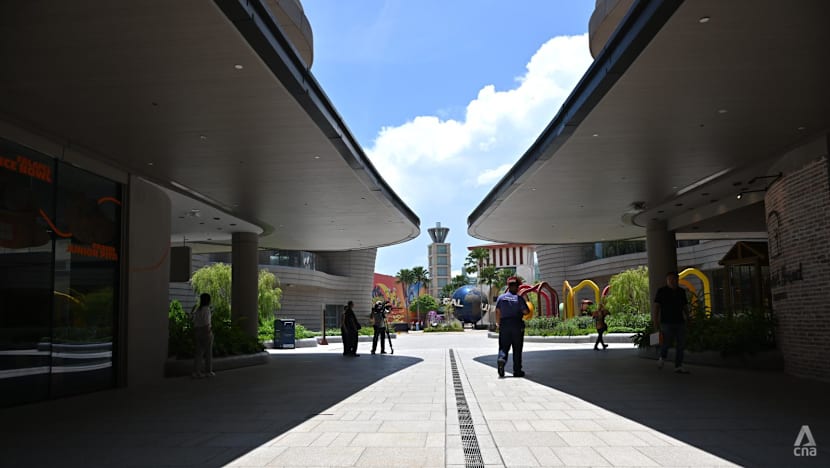
STUDY ON OUTDOOR THERMAL COMFORT
As part of the Cooling Sentosa Roadmap, SDC commissioned global environmental design consultant Atelier Ten in March 2025 to conduct a study on outdoor thermal comfort (OTC) conditions across the island.
Ms Cristina Kuo Lin, the divisional director of environmental at Atelier Ten (Asia), said that outdoor thermal comfort takes into account a combination of environmental and personal factors.

Environmental factors include air temperature, humidity, wind, air speed and radiation from surfaces, while personal factors take into account what a person is wearing and what activity he or she is involved in.
Ms Kuo said thermal comfort was best represented by an internationally-recognised metric called the physiological equivalent temperature (PET), which essentially refers to the "feels like" temperature.
In Sentosa, the consultancy used on-the-ground field measurements during peak afternoon hours and computational modelling to establish a heat map of Sentosa, showing its outdoor thermal comfort baseline.
The study then identified locations where interventions were needed to improve the effects of heat.
The results were a range of PETs at outdoor spots across the island.
More than half of the 500ha island is currently covered with greenery, and areas close to these, such as Mount Imbiah and Mount Serapong, saw considerably cooler PETs of 34 degrees Celsius and 33 degrees Celsius respectively.
Meanwhile, Palawan Beach had a PET of 49 degrees Celsius. The highest PET - 56 degrees Celsius - was measured at Resorts World Sentosa (RWS) Plaza.
In the areas with high PETs, Ms Kuo said solar radiation and the built environment could be factors.
"So, for example, in the city ... We have a lot of hard surfaces, a lot of towers around you, all those buildings, materials, they absorb the heat, so they are constantly also radiating heat out into the environment.
"So the PET levels between a very open space ... like (in) a car park, for example, versus a place where you're surrounded by buildings, you might feel slightly cooler (in) a car park, whereas if you're surrounded by buildings, you might feel a little bit more stuffy and ... hotter."
Singapore Management University's Professor of Urban Climate Winston Chow said the humid ambient environment, high sun exposure in the afternoons, and low wind speeds were three key factors contributing to the PET.
"However, the bigger challenge is that PET tolerance also depends on how acclimatised people are in the location," Prof Chow added, referring to tourists.
"Given that a significant proportion of Sentosa’s visitors come from climates that differ from Singapore, it is likely that creating a cooler-than-expected environment is needed to ensure that visitors used to a temperate climate will not be subject to heat stress that Singapore residents may be acclimatised to."
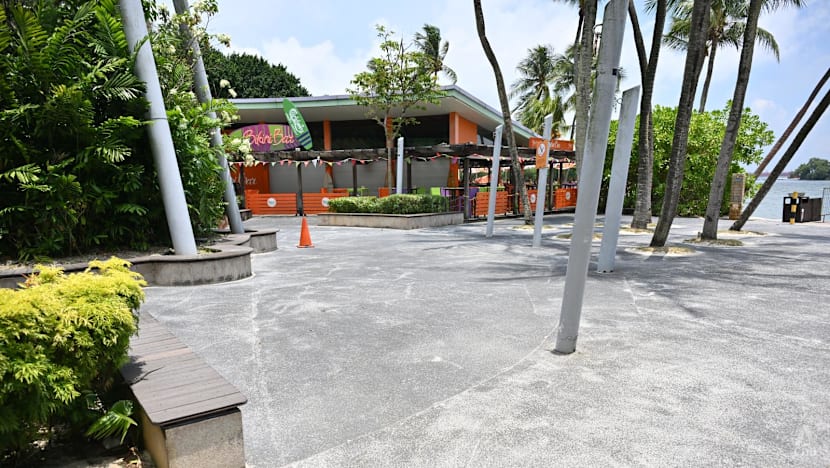
COOL NODES AND ZONES
Sentosa will implement a series of 10 cool nodes and zones along its main thoroughfare between now and 2030.
A node is smaller than a zone and is meant to be an accessible pit stop where guests can take a quick respite from the heat.
"The intent is for you to take a quick break, freshen up, top up your water bottles, and then move on quickly to your next area that you want to experience," Mr Ma said.
Both cool nodes and zones will have shelter, seating, hydration and high-volume ventilation. The larger cool zones will anchor larger precincts with infrastructure, with guest services and experiential offerings, so that visitors spend a longer time there.
Aside from an already-completed cool node and zone, four more cool nodes are planned for the near term, until 2027, while the remaining four nodes will be completed between 2028 and 2030.
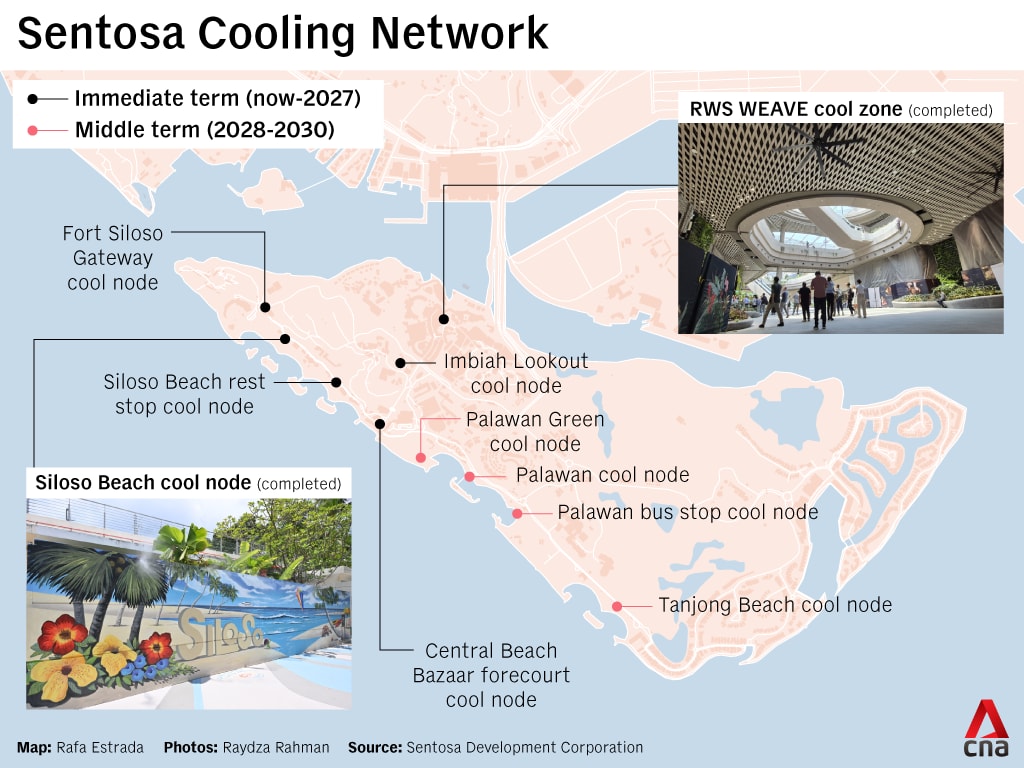
Referring to the map of cool nodes and zones, Mr Ma said: "This is the main guest flow north-south, and actually also slightly east-west. This road, or this thoroughfare here, is important to us because that's how many of our guests get to the famous locations on Sentosa, whether they are the beach clubs, whether they are the attractions ... and some of the F&B along the beach as well. So these must be the areas we tackle first."
One completed cool node at Siloso Beach provides an idea of what future ones could look like.
This cool node is located along a walkway between Rumours Beach Club and Scentopia, and has been undergoing a trial since the middle of this year.
It features a mural on a wall created using paint that reflects solar heat and lowers surface temperatures by up to 2 degrees Celsius.
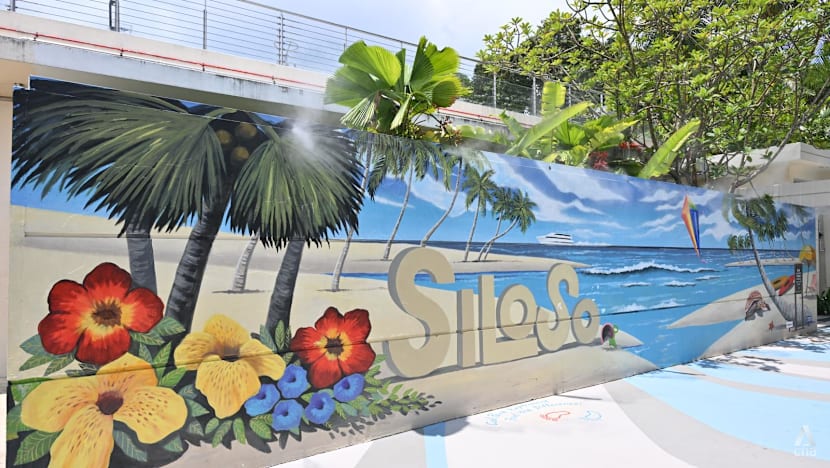
The paint on the floor also helps keep the ground cooler for barefoot beachgoers.
A misting system by Panasonic has been installed on top of the mural, spraying ultra-fine water droplets that bring down temperatures without drenching guests. The misting system is turned on from 11am to 5pm daily.
Reporters on the ground noticed that brief gusts would blow the mist in the wrong direction, or disperse the mist too quickly for its effects to be felt by passers-by.
Asked about possible improvements, SDC said its next application of the misting system was likely to be "more targeted", and could be located near seating areas, for example.
"Based on the modelling, the addition of a misting system should achieve an improvement of an additional 2 degrees Celsius in PET," SDC said.
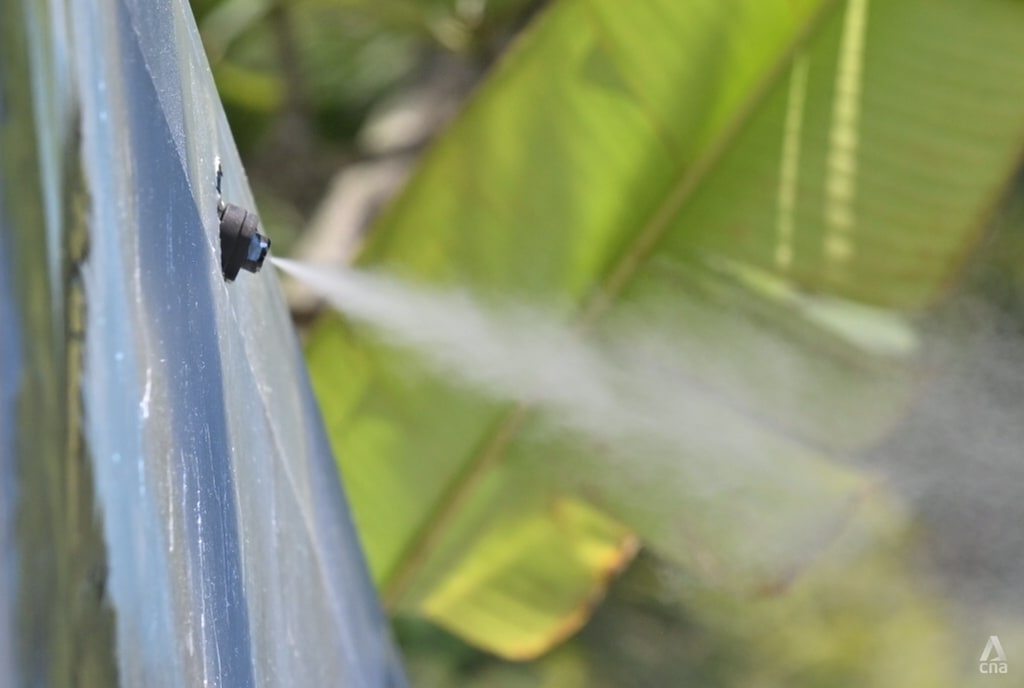
Apart from these, parasols as well as native trees and shrubs provide shade in the area.
Sentosa said that an interim guest survey conducted with more than 200 visitors found that about three in four were highly satisfied with the measures at this cool node.
The trial will run until April next year.
The next cool node will be at the 2,400sqm Central Beach Bazaar forecourt near the Beach Station transport hub. Planned measures include parasol canopies over seating areas to provide shade; high-volume, low-speed fans for wind; a misting system; and high solar reflectance paving that can reduce heat absorption.
SDC said that works are expected to commence in the last quarter of 2025 and be completed next year.
SDC, in partnership with the Centre for Nature-based Climate Solutions at the National University of Singapore (NUS) and NUS Cities, has also created a tropical microforest within the Central Beach Bazaar forecourt cool node that could further lower temperatures.
A regenerative tropical microforest is a man-made forest scape in small spaces, and ranges from 10sq m to 300sq m, NUS' Professor Veerasekaran P Arumugam, who is in the Office of the President, said in response to CNA's queries.
Diverse native species are used to curate a natural habitat that can encourage regenerative growth, he added.
"The structure, forest tiering and species diversity allow the habitat to develop with varying heights and forms. This creates opportunities of gradation in the physical form of the space.
"This, in turn, allows the wind flow and shading canopies to be distributed variously and randomised to mimic the opportunities of vegetated spaces to dissipate heat, allow cooling wind flow and also create the perception of cooling within and around these microforests," Prof Veerasekaran said.
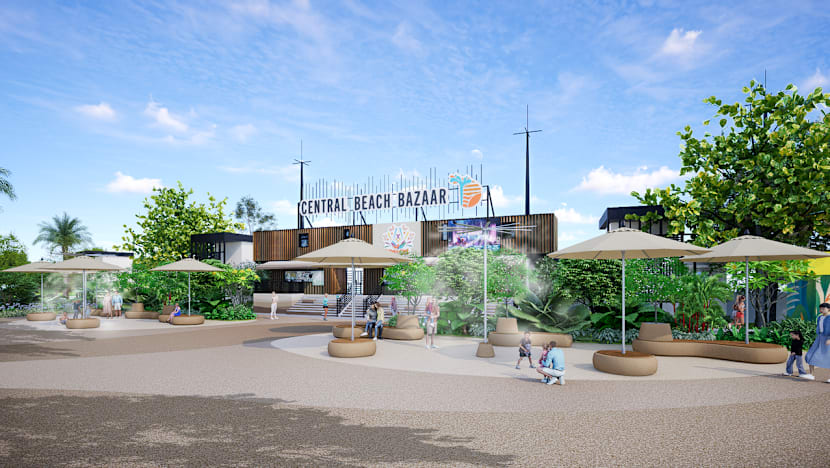
A COMPLETED COOL ZONE
Sentosa's only cool zone at the moment is the Weave, a lifestyle hub at RWS that opened its doors to guests in July this year.
The Weave is an area shaded by membranes that remove 70 to 75 per cent of solar heat, said Mr Lim Teik Siang, the acting senior vice president of projects at RWS. Only retail spaces at the Weave are air-conditioned.
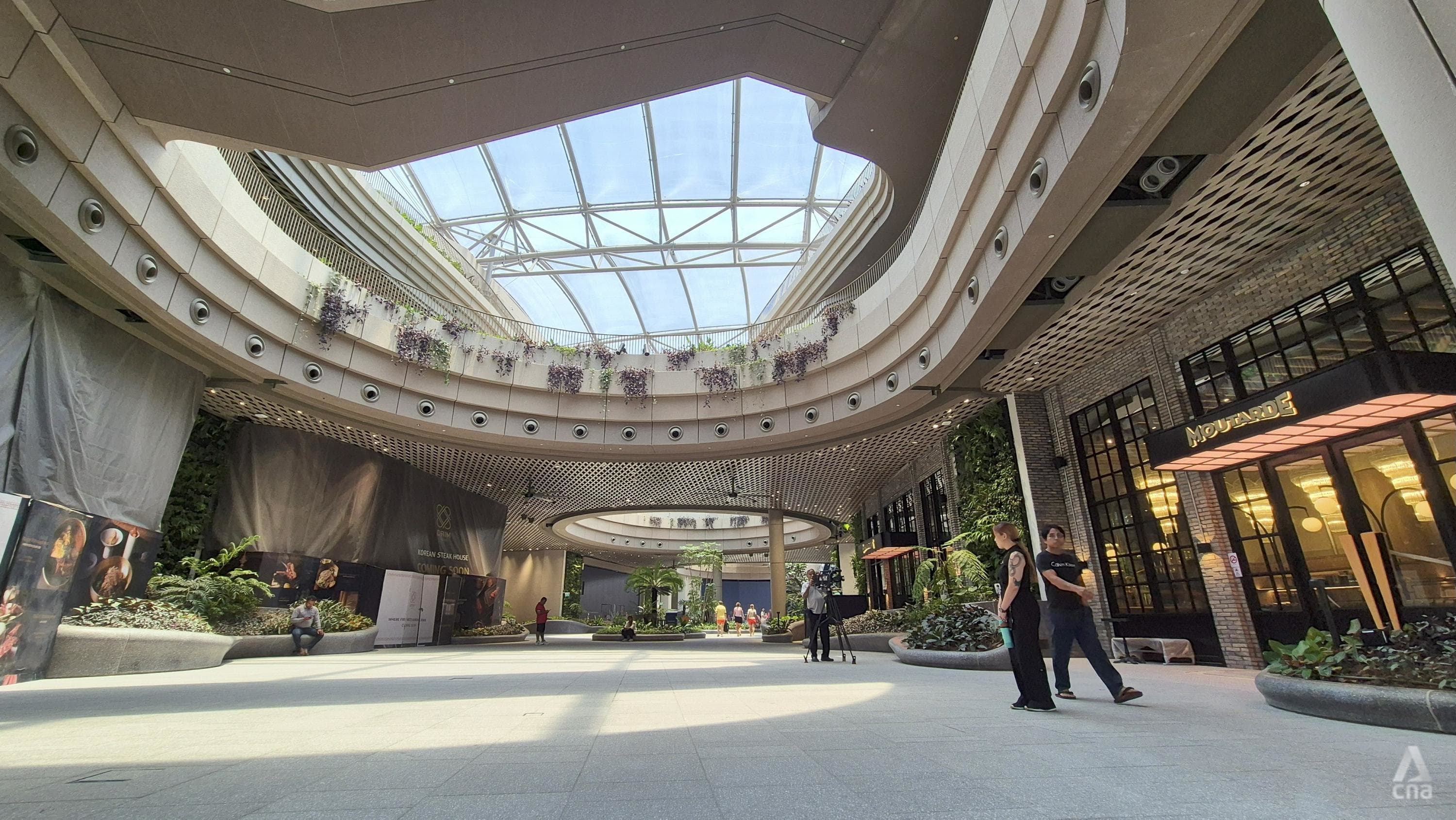
To keep spaces cool, the lifestyle hub taps on cold air that is produced as a by-product from heat pumps that generate hot water for the hotels at RWS.
The cold air is harnessed and redirected into the Weave. Cold air is then released through vents around the area.
Jet fans and high-volume, low-speed fans are installed at strategic spots in the Weave, with the former helping to push the draught of cold air to guests.
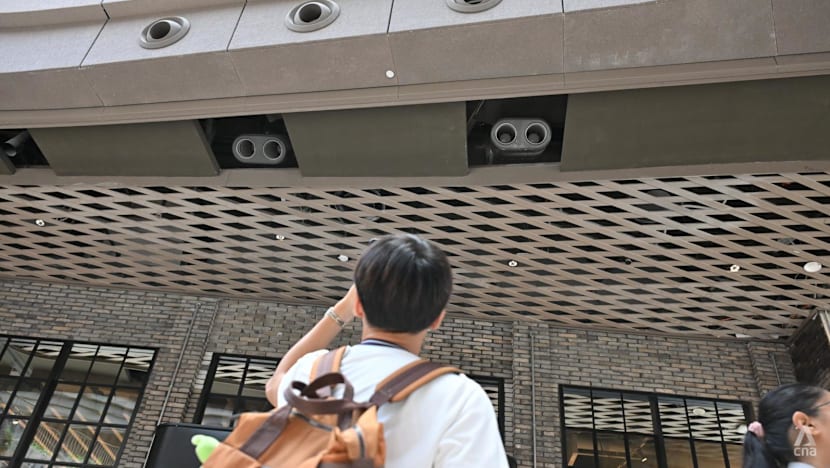
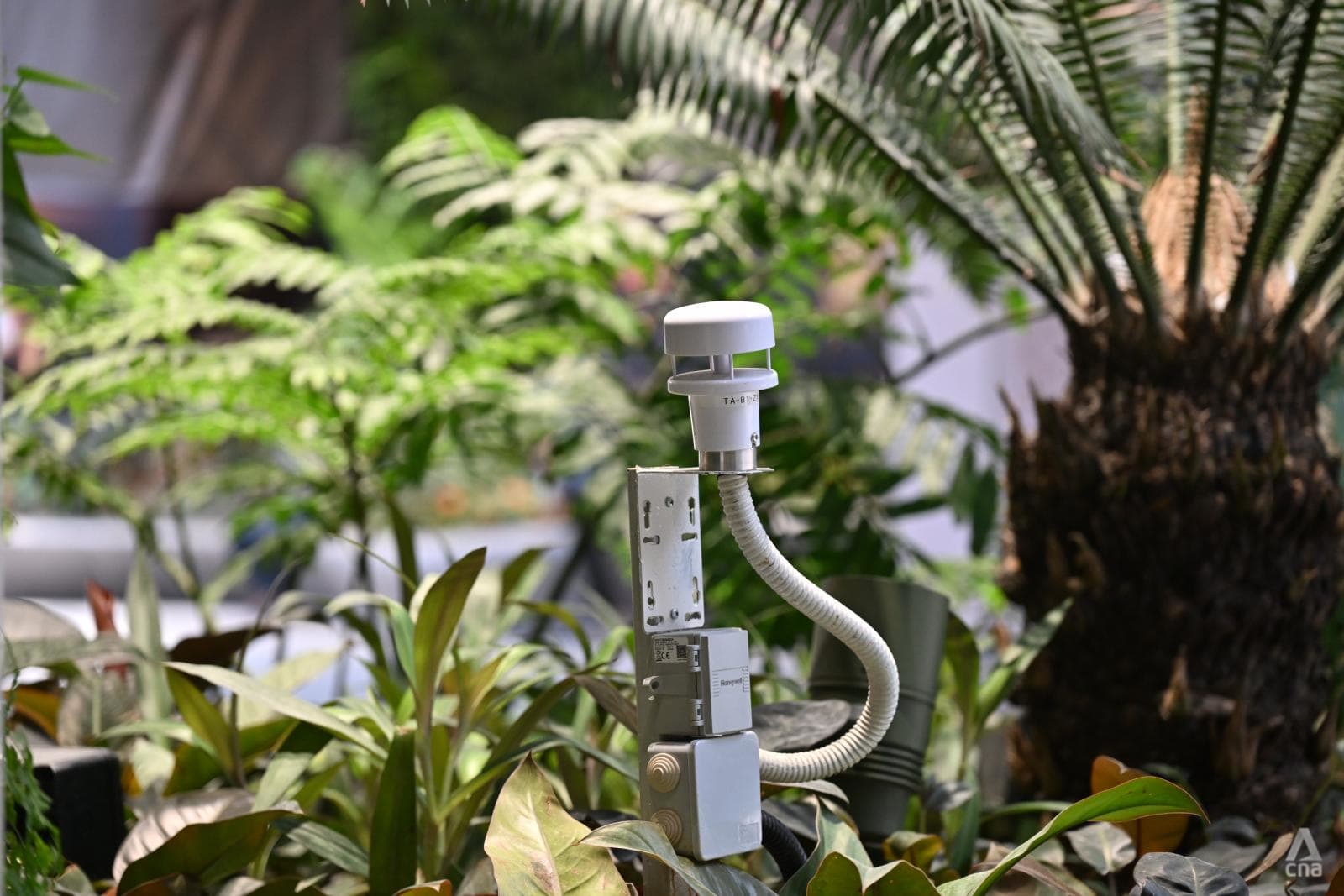
About 20 to 25 sensors placed throughout the Weave continuously measure air flow and temperature to automatically regulate the speed of fans. For example, during rainy days, the fan speeds will slow and the flow of cold air will stop.
The overall result is that area within the Weave is up to 5 degrees Celsius cooler than outside of it.
KEEPING THE SPACE OPEN
Asked why the measures for cool nodes and zones did not involve air-conditioning, Mr Ma said it was part of Sentosa's strategy.
"When we want to tackle outdoor thermal comfort, we are also very concerned about what is sustainable and what kind of energy levels we're going to deploy to do this.
"Very early in our strategy, we made it very sure that we're not going to enclose the place and cool it down," Mr Ma said, adding that Singaporeans could go to malls for that.

"So we didn't specifically do that, because that wasn't something that we felt that was necessary for that pit stop or the cool zone, as the study has informed us if you provide shade, if you provide moving air, if you put ... specific spot cooling, actually, that will already make for quite a comfortable outdoor experience."
This decision aligned with how Sentosa was trying to encourage people to enjoy the outdoors.
"We want to encourage people to enjoy the outdoors, get some sun, breathe some fresh air, interact with nature. And the best way to do it is not to ensure that we ... close places."
Cooling measures are planned for three cool nodes at Sentosa’s Palawan Beach area, where PET readings can reach nearly 50 degrees Celsius. The nodes are expected to be completed by 2030.
Mr Markus Christ, the general manager of The Palawan @ Sentosa, said a mix of families with young children, youth, and adults visit the attractions. He hopes cooling features would encourage visitors to spend more time there.
He pointed to examples such as shaded seating with clear views of children’s play areas, interactive cooling features like misting systems and water play touchpoints, as well as comfortable resting spots equipped with fans or passive cooling for older visitors.
"We hope the eventual levels can be brought closer to the low 40s (degrees Celsius, PET) or below, which would make outdoor play and movement between our attractions far more comfortable, particularly during the hotter afternoon hours," said Mr Christ.
















